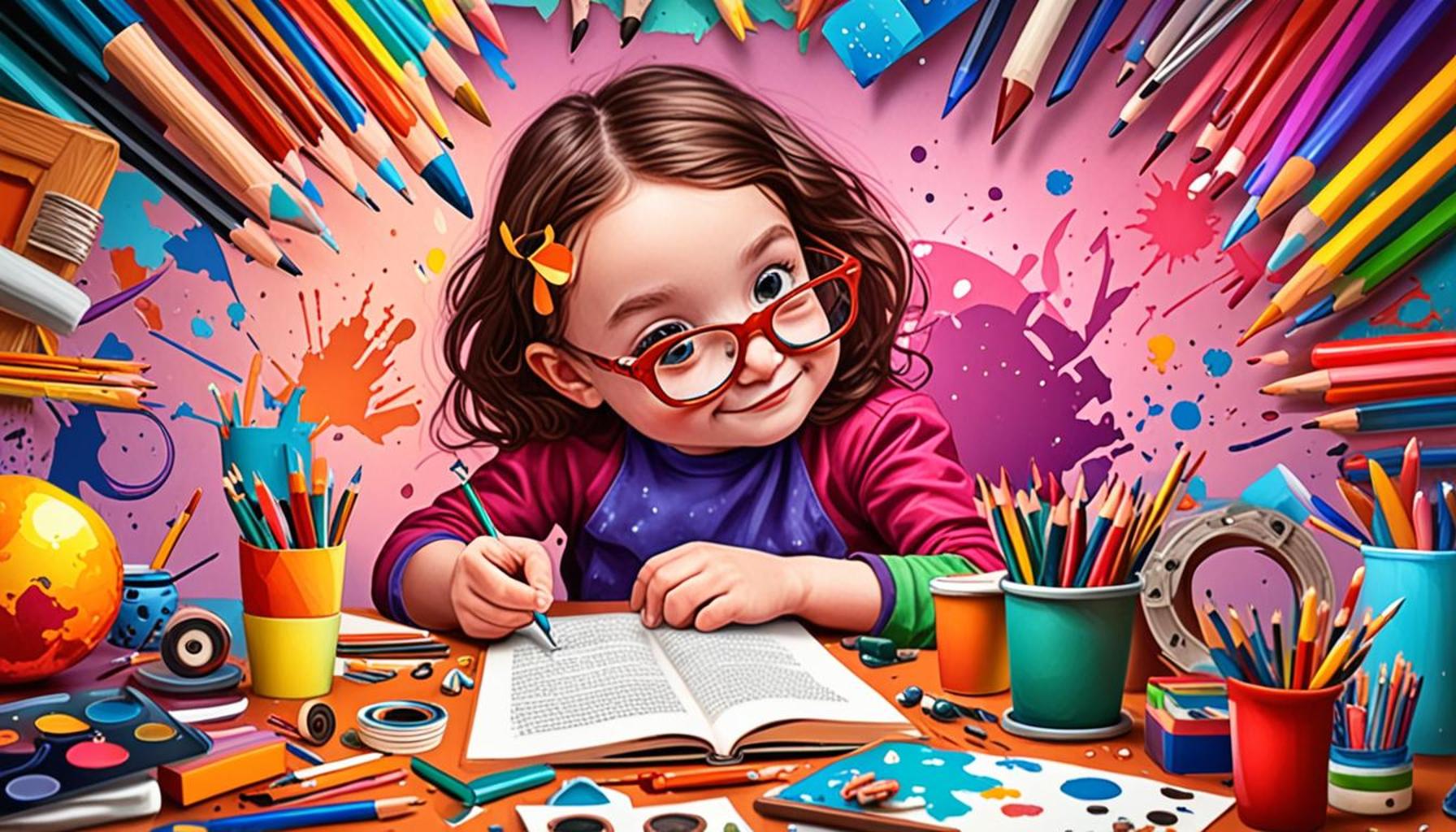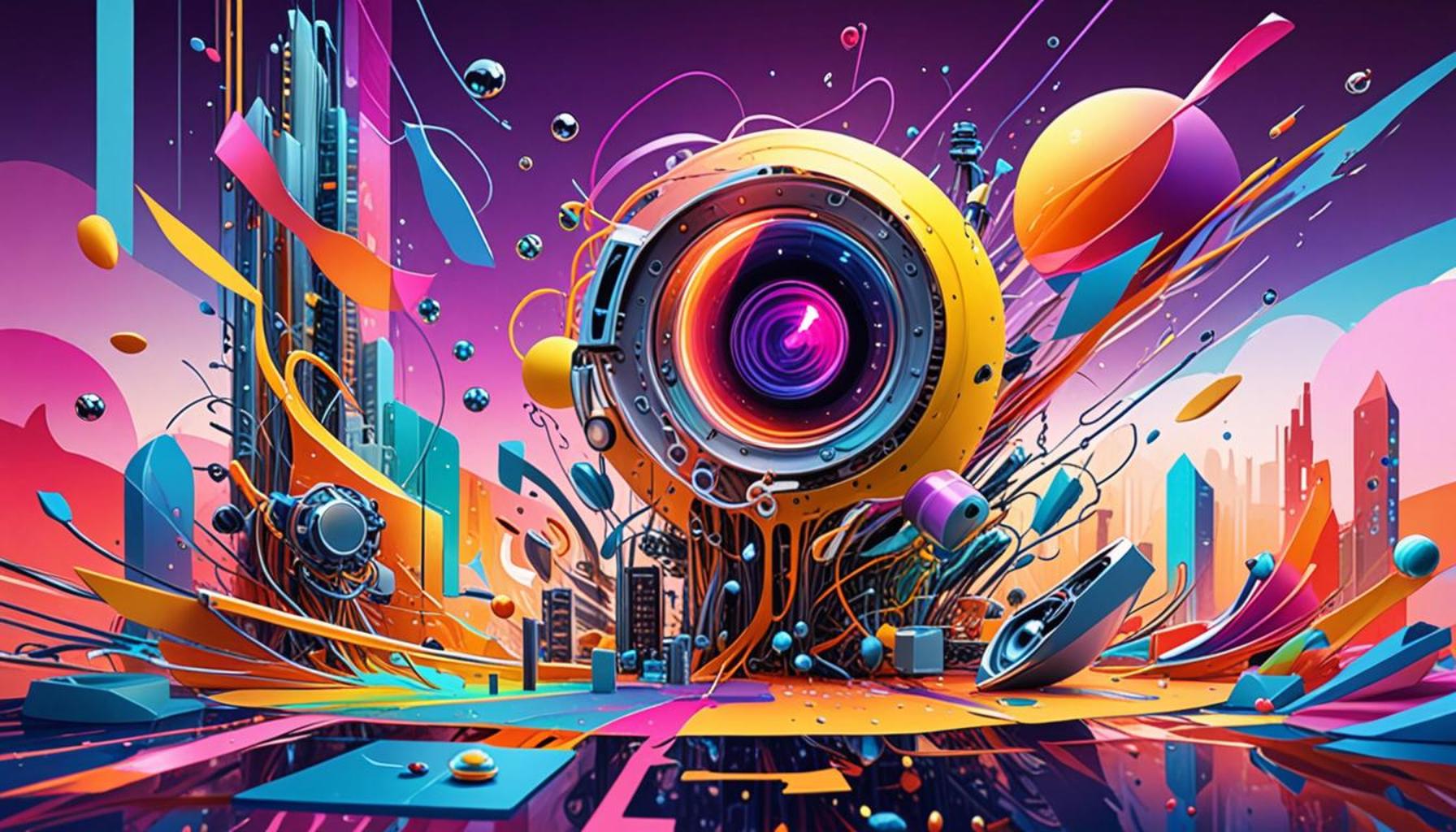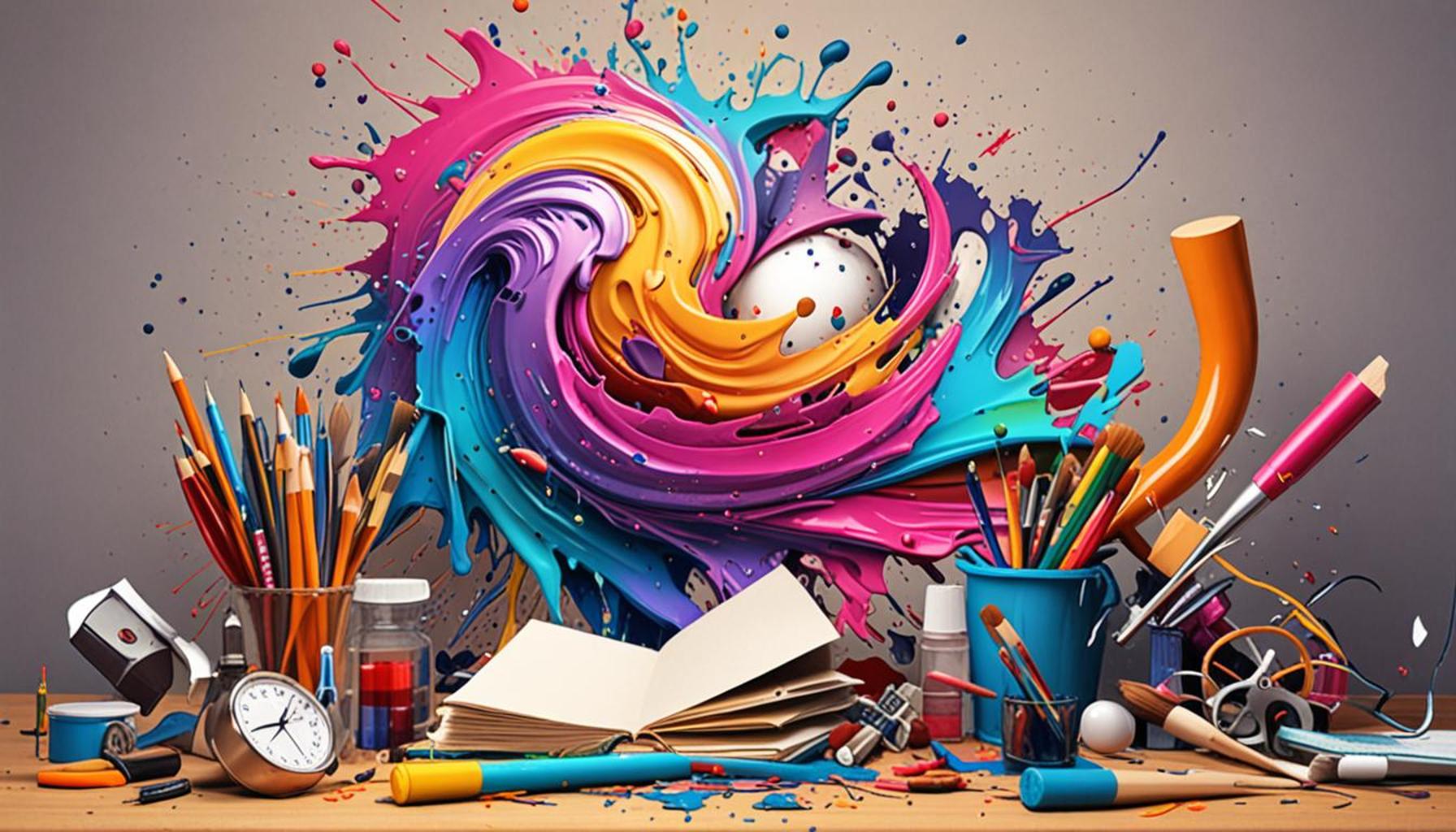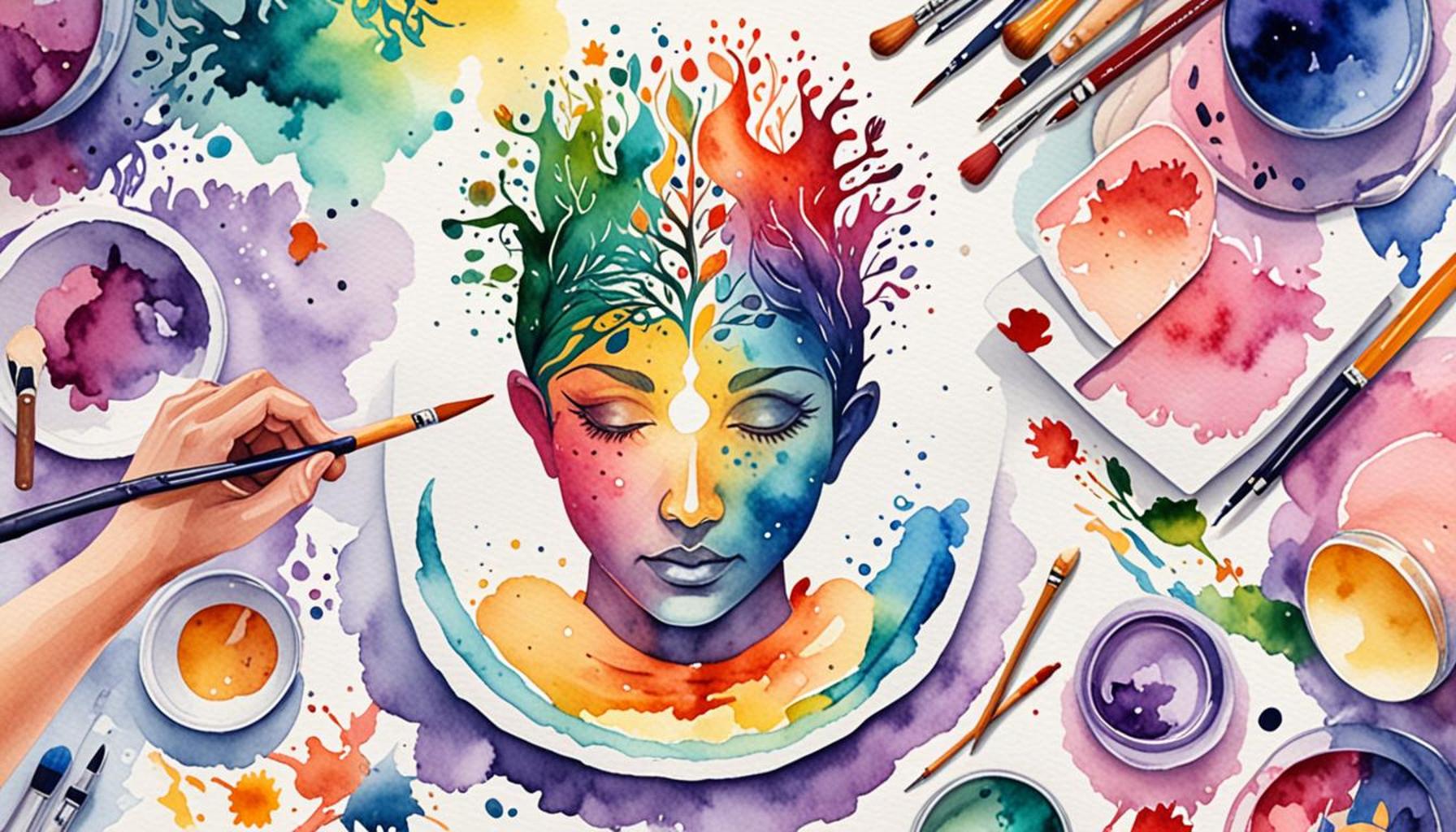The Role of Art in Education: How Creative Hobbies Can Transform Learning

The Transformative Power of Arts in Learning
The integration of art in education has proven to be a game changer in the learning process. As schools across the United States increasingly acknowledge the value of creative expression, the benefits of various artistic disciplines are coming to light. Art enriches the educational experience, fostering an environment where students can thrive and innovate.
Consider the following ways art transforms learning:
- Enhanced Critical Thinking: Engaging with art encourages students to analyze, interpret, and evaluate, developing their abilities to think critically. For instance, when students study a piece of art, they might discuss the emotional responses it evokes or the techniques the artist used to convey meaning. This deep interaction not only sharpens their analytical skills but also promotes open-mindedness and respect for differing perspectives, as students consider someone else’s interpretation of the same artwork.
- Improved Communication Skills: Artistic activities promote collaboration, allowing students to express ideas and work together effectively. In group projects, such as theater productions or collaborative mural paintings, students must communicate clearly and listen actively to bring their creative visions to life. This teamwork not only builds strong interpersonal relationships but also equips them with essential skills appreciated in the workplace, such as cooperation and negotiation.
- Boosted Motivation: Creative projects can ignite passion for learning, making education more enjoyable and engaging. For instance, incorporating art into science lessons—such as creating visual representations of scientific concepts—can help solidify students’ understanding while simultaneously maintaining their enthusiasm for the subject. When students see learning is fun and multifaceted, they tend to develop a more positive attitude towards education overall.
Moreover, studies have shown that students involved in arts education often perform better in other academic subjects. For example, a 2015 report from the Arts Education Partnership found that students who engage in arts education score higher on standardized tests in reading and mathematics compared to their peers without such experiences. This cross-disciplinary benefit highlights the importance of nurturing creative hobbies during formative years. Schools that prioritize art provide notable advantages for their students that can positively influence future academic and career opportunities.
As we delve deeper into the role of art in education, we will uncover its profound effects on students’ motivation, self-expression, and academic performance. By embracing creativity in schools, we are not only nurturing budding artists but also cultivating innovative thinkers and adaptable problem solvers. This exploration into the world of arts and learning could indeed lead the way to a brighter, more innovative future for learners across the nation. From bustling urban classrooms to small town schools, the integration of arts invites curiosity, encourages exploration, and inspires the next generation of leaders.
EXPLORE MORE: Click here to dive into the blend of yoga and painting
Art as a Catalyst for Emotional and Social Development
Art in education extends beyond merely enhancing academic performance; it also plays a significant role in students’ emotional and social development. When students engage with artistic endeavors, whether it be painting, dancing, or playing music, they are given the opportunity to explore their emotions and express themselves freely. This process not only aids in personal growth but also helps students build resilience and self-confidence.
For many children and adolescents, the world can be overwhelming. Artistic expression allows them to channel their thoughts and feelings in a constructive manner. Programs that integrate art into the curriculum often help students cope with stress and anxiety, fostering a sense of well-being and emotional stability. Research conducted by the National Endowment for the Arts indicates that participation in the arts can lead to lower levels of anxiety and depression in children, suggesting that a creative outlet is essential for mental health.
Furthermore, art encourages students to forge connections with their peers, facilitating social skills that are crucial in today’s collaborative work environments. When students participate in group art projects, they learn to work together toward a shared goal. Here are a few key social skills that are enhanced through artistic collaboration:
- Empathy: By discussing art and its meanings, students learn to appreciate diverse perspectives, fostering empathy toward one another.
- Conflict Resolution: Collaborative projects often require negotiation and compromise, teaching students how to resolve differences effectively.
- Confidence Building: Sharing their artistic creations with classmates boosts self-esteem, encouraging students to take pride in both their work and their peers’ successes.
The benefits of art in education are echoed in a myriad of studies that show how involvement in the arts can result in significant social improvements among students. For example, a 2018 survey by the Arts Education Partnership found that schools with robust arts programs reported higher levels of student engagement and attendance. In addition, these programs often lead to more inclusive environments, where students from different backgrounds come together to create, learn, and grow.
The role of art in fostering emotional intelligence and social skills cannot be overlooked. As students navigate the complexities of their formative years, art serves as a beacon, illuminating paths toward resilience, understanding, and collaboration. The incorporation of creative hobbies in education is not just an additive element—it is a vital part of developing well-rounded individuals equipped to tackle challenges in both their personal and professional lives.
Art education plays a pivotal role in shaping the learning experiences of students. By integrating creative hobbies into the curriculum, educators can enhance cognitive abilities, emotional intelligence, and social skills. Engaging in artistic activities not only fosters creativity but also encourages problem-solving and critical thinking. Students often find that expressing themselves through art provides a unique outlet for communication, transcending traditional academic barriers.Moreover, art education is linked to improved academic performance across various subjects. Research has shown that students who participate in the arts consistently score higher on standardized tests than those who do not. This correlation suggests that the skills developed through creative pursuits, such as observation, interpretation, and synthesis, are transferable to other academic areas. For example, studying visual art can enhance spatial reasoning skills, which are crucial in fields like mathematics and science. Beyond the academic realm, art instills a sense of community and belonging. Collaborative projects allow students to work together towards a common goal, fostering teamwork and communication skills. This environment not only nurtures interpersonal relationships but also promotes empathy, as students learn to appreciate diverse perspectives and cultural backgrounds. Incorporating creative hobbies into education can also play a significant role in personal development. Art can serve as a therapeutic tool, helping students process emotions and navigate challenges. Whether through painting, music, or drama, creative expression provides a means for students to explore their feelings, build resilience, and develop a deeper understanding of themselves and others.As we delve deeper into the multifaceted benefits of art in education, it becomes evident that embracing creativity is not just about enhancing artistic skills; it is about transforming the entire learning experience. The integration of creative hobbies paves the way for students to become well-rounded individuals equipped with essential life skills.
DIVE DEEPER: Click here to learn more
Artful Approaches to Cognitive Growth and Skill Development
Beyond emotional and social enhancement, art in education also significantly contributes to cognitive development and skill acquisition. Engaging with various forms of art can sharpen students’ critical thinking and problem-solving abilities. Artistic disciplines require learners to make complex decisions, such as choosing colors, materials, or techniques, which fosters an analytical mindset that is essential in both academic endeavors and real-world applications.
For instance, participation in visual arts, such as painting or sculpture, encourages students to visualize concepts. They learn to translate their ideas into tangible works, improving their spatial awareness and understanding of proportions. Studies have shown that students who partake in visual arts tend to perform better in mathematics and science due to this enhanced ability to conceptualize and manipulate abstract ideas.
Moreover, the act of creating art involves experimentation and iteration—characteristics that are crucial for scientific inquiry. A study from the Arts Education Partnership emphasizes that students who engage in artistic practices develop a growth mindset, learning that failures are part of the creative process. This resilience can translate into perseverance in their academic undertakings, as they become more willing to tackle challenging subjects without succumbing to frustration.
The Integration of Arts into STEM: A STEAM Revolution
The integration of the arts into the traditional STEM (Science, Technology, Engineering, and Mathematics) curriculum has given rise to a revolutionary educational approach known as STEAM. This model recognizes that art and creativity are not separate from these analytical disciplines but rather vital components that enhance learning. Programs that have adopted STEAM principles show higher levels of engagement among students, encouraging them to approach problem-solving with creative and innovative thinking.
For example, architecture incorporates both engineering principles and artistic design. Students exposed to this interdisciplinary approach develop a richer understanding of how creativity and structure coexist, allowing them to think outside the box in their future careers. Similarly, schools across the United States are witnessing the positive impact of STEAM initiatives. Statistics reveal that institutions integrating arts into their STEM programs have seen a significant uptick in graduation rates and college enrollment.
Bridging Cultural Gaps and Fostering Global Perspectives
Art education also plays a crucial role in bridging cultural gaps and fostering a global outlook amongst students. Exposure to diverse artistic traditions encourages students to explore and appreciate different cultures, enhancing their cultural literacy and global awareness. For instance, programs that involve studying world art history or engaging with local artists can impart essential lessons about inclusivity and multiculturalism.
- Global Citizenship: Art can act as a unifying language that transcends boundaries, promoting understanding and cooperation among students from different backgrounds.
- Creative Citizenship: By engaging with art, students learn the importance of civic responsibility, as artistic expression often serves as a platform for social commentary and activism.
- Community Engagement: Art projects that involve local communities allow students to forge connections outside the classroom, enriching their understanding of societal dynamics.
In today’s increasingly interconnected world, the benefits of fostering cultural awareness through the arts cannot be overstated. As classrooms strive to cultivate an inclusive atmosphere, the role of art in education emerges as a transformative force capable of shaping empathetic and informed global citizens.
DIVE DEEPER: Click here to learn about eco-friendly collecting
Conclusion: Redefining Educational Landscapes through Art
In conclusion, the profound role of art in education transcends mere decoration of classroom walls; it fundamentally transforms learning experiences for students across all disciplines. By integrating creative hobbies into the educational framework, we cultivate not only cognitive skills but also emotional intelligence and cultural awareness. As we have explored, the incorporation of artistic practices can enhance critical thinking, problem-solving abilities, and resilience, equipping students with the tools necessary for academic success and future careers in an ever-evolving job market.
The emergence of the STEAM approach signifies a paradigm shift, recognizing the vital connection between art and analytical subjects, thus fostering innovation and creativity in students. Diverse exposure to art encourages learners to embrace inclusivity, expanding their global perspectives and nurturing a sense of civic responsibility. This process not only enriches individual lives but also strengthens communities by advocating for collaboration and understanding among varied cultural backgrounds.
As we navigate an increasingly complex world, the benefits of integrating the arts into education are clear. Schools, educators, and policymakers must prioritize this integration to create enriching environments where students can thrive intellectually and socially. Continued investment in arts education promises to shape the leaders of tomorrow—individuals who are not only well-versed in academic knowledge but also culturally sensitive and creatively empowered. Ultimately, the journey through art cultivates a holistic educational experience that allows students to explore their full potential and contribute meaningfully to society.


